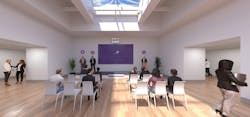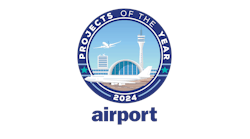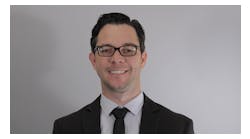For over two years, RS&H has directed preparation of a comprehensive airport master plan and update to the strategic relationships and roles of the three airports owned and operated by the Salt Lake City Department of Airports (SLCDA) to determine the future path of facility development.
The goal of this study is to provide guidelines for future airport development which will satisfy future aviation demand in a financially feasible manner, while at the same time balancing the environmental and socioeconomic conditions with the aviation related needs.
The RS&H Planning Team examined a variety of physical, historic, and political aspects that lead us to potential solutions for the future of Salt Lake City International Airport. Opportunities to increase airfield capacity, improve operational efficiencies, and reduce environmental impacts are being explored. The project includes preparing an inventory of existing facilities at each airport, an aviation system forecast, a determination of facility requirements, an evaluation of alternatives, identification of environmental concerns, preparation of a capital improvement program, and an airport layout plan.
The master planning process was just entering another public engagement phase when the COVID-19 pandemic began disrupting the aviation industry. Following guidelines from the Centers for Disease Control and Prevention (CDC) and State of Utah, as well as SLCDA leadership and Salt Lake City Mayor Erin Mendenhall, to help contain the spread of COVID-19, master plan efforts and stakeholder engagement needed a virtual environment to continue.
Thanks to newer technologies, we have been able to keep the project moving without missing a beat.
Advisory Committees Go Virtual
The SLC Advisory Committees focused on facility requirements and preliminary alternatives and met virtually in May with over 45 participants. The meeting format included an opportunity for voice, video, and written participation. What resulted was a lot of discussion and great feedback.
These committees help inform the master plan process, including understanding how the airport can support future development, informing ultimate land use needs and understanding the role SLC plays in the world aviation system.
We look forward to engaging with stakeholders in person in the future, but for now, we are excited to hear from them virtually. We will continue to update the SLC Community Involvement webpage with meeting summaries and draft documents.
Logistics Set High Expectations
Public information meetings are all about logistics and planning. You must figure out all the little details – talking points, who should speak to what topic, how the room is laid out, etc. – and make sure everyone’s expectations are the same.
Logistics planning for virtual meetings isn’t so different. We worked through the details as to who would be at what station, as well as how we can answer questions and create iterations, and how long to leave the virtual room open.
We found that virtual meeting rooms have one big advantage over physical meeting spaces: they are completely customizable. We can make the space the way we want to and fit everything in, which can be challenging at public venues.
We settled on a layout for our virtual meetings that would look familiar to anyone who has ever walked into a physical public engagement session. Log on, and you’ll see virtual people sitting in chairs, listening to virtual presentations. Other virtual presenters are present at different project boards, ready to interact with anyone who stops by.
Once we had our virtual meeting layout in place, our team started building the environment, plugging and playing the presentation content and people into the space. In real life, you would have a team of consultants, airport staff there to interact with public. We offered the same access in the virtual setting to maintain credibility.
It’s important to remember these meetings are all about collecting public input and feedback. So, we had to determine what type of information we wanted to collect from the public. We want people to feel comfortable coming into the digital space – and not afraid that Big Brother is lurking, taking all their personal info. We settled on simple surveys as well as comment boxes.
Virtual Meeting Walk-Through
For the virtual Salt Lake City public information meeting set to take place July 9, there are five virtual stations to explore:
- The main presentaton delivers a update on the future needs and introduces preliminary alternatives to address these future facility needs.
- Station No. 1 provides a master plan overview, explaining the process, schedule, and planning issues.
- Station No. 2 reviews the forecasts passenger travel numbers and demand, and factors in a COVID-19 update.
- Station No. 3 goes over the strategic plan for general aviation at the system of airports.
- Station No. 4 introduces the Fly Healthy Plan, which explains steps SLC is taking to keep passengers safe during the COVID-19 pandemic.
- Station No. 5 goes over the new terminal virtual tour and update on the terminal process.
Each of these stations feature a custom avatar for each speaker, as well as a brief bio and pre-recorded remarks. There are also 360-degree experiences the public can experience that takes them through different areas of the new airport terminal. This technology can work on any device, from desktops and laptops to tablets and smartphones.
Additionally, the live Q&A sessions hosted by airport and RS&H staff on Zoom are made available in the virtual public engagement room. Those who visit the virtual space can submit comments and questions that will be reviewed and addressed.
Looking Ahead
After utilizing the old terminal building for over 50 years, serving 23 million passengers, the $4.1 billion airport redevelopment plan at Salt Lake International Airport will add 23 gates for a total of 78, up from the current 55 gates. While currently handling 325,000 aircraft operations, 98 nonstop flights to different cities, and moving 169,000 tons of freight, by 2040 we expect 38 million passengers and 271,000 tons of freight, with 435,000 aircraft operations.
While the passenger terminal function is set, our new master plan will dig deep into what to do with all the other facilities to complement the new terminal and balance overall airport’s capacity for many years to come. Thanks to the willingness of the SLC team and community to embrace these new technologies, the new master plan is staying on schedule.
Michael Becker is a senior aviation consultant for RS&H. He has more than 15 years of experience managing and supporting airport planning projects, including master plans, advanced terminal area studies, facility programing services, environmental documentation, conceptual site development studies, airport layout plans and eALPs, feasibility studies, Capital Improvement Plan development and implementation strategies. Michael can be reached at [email protected].







